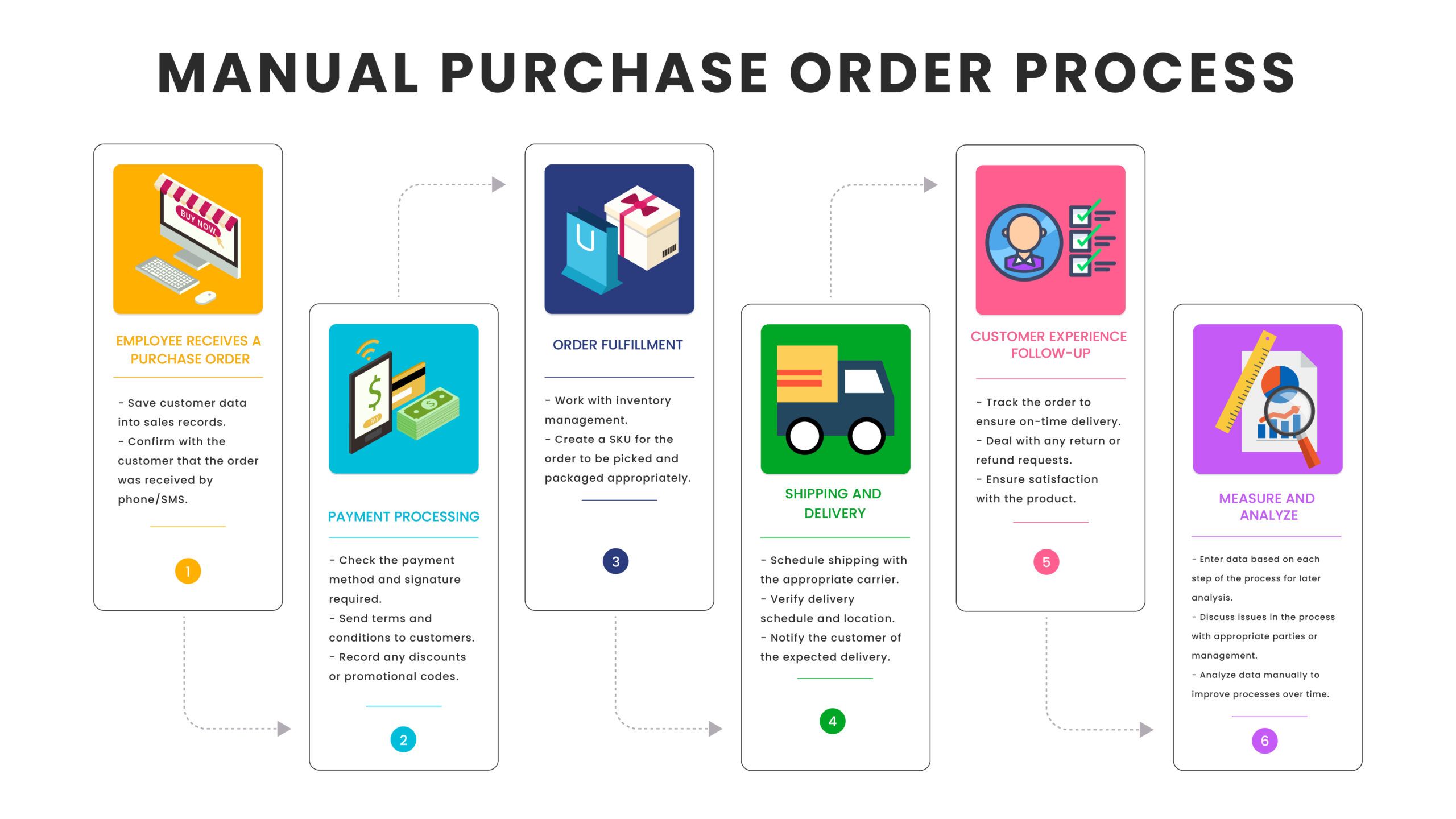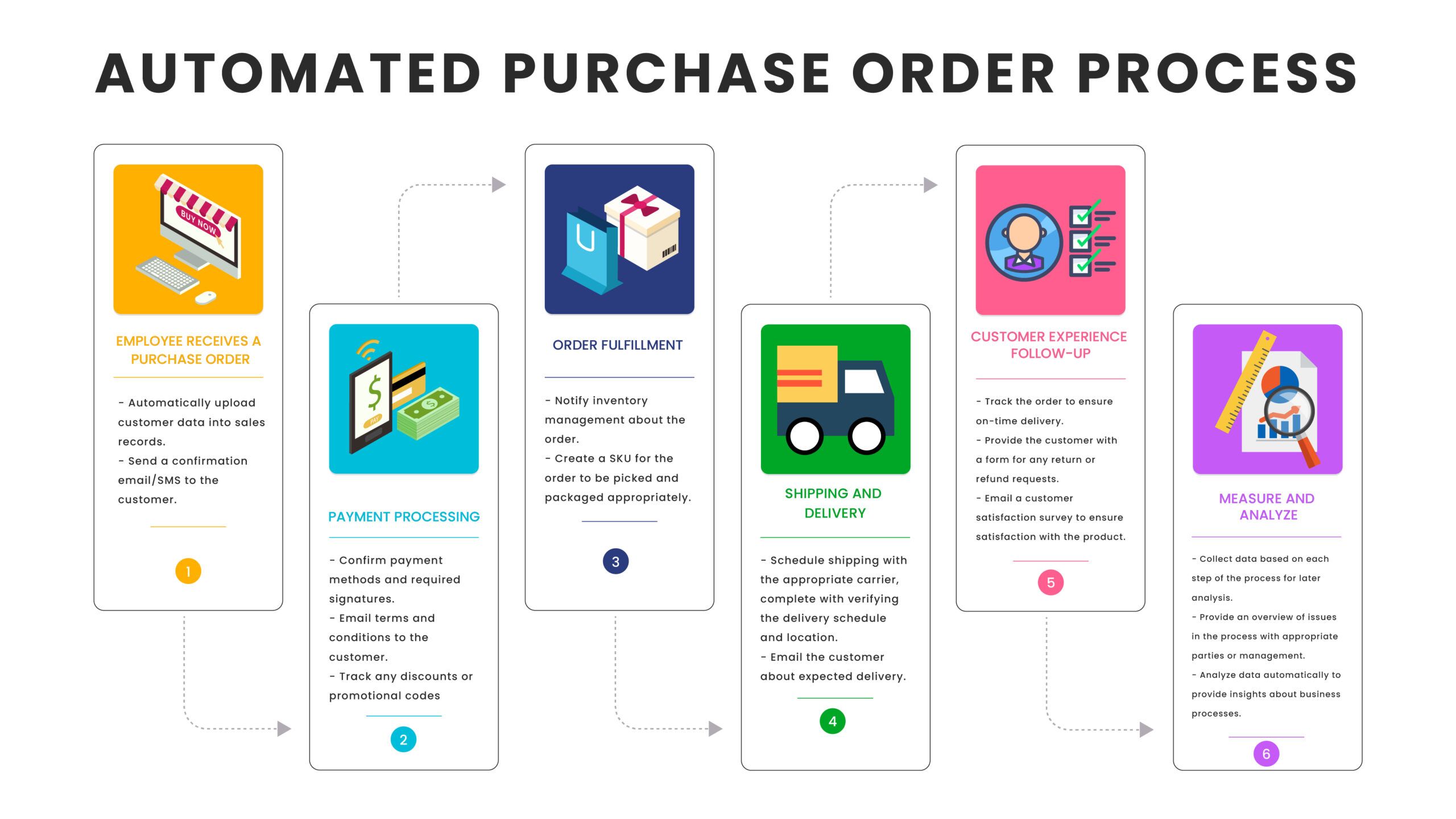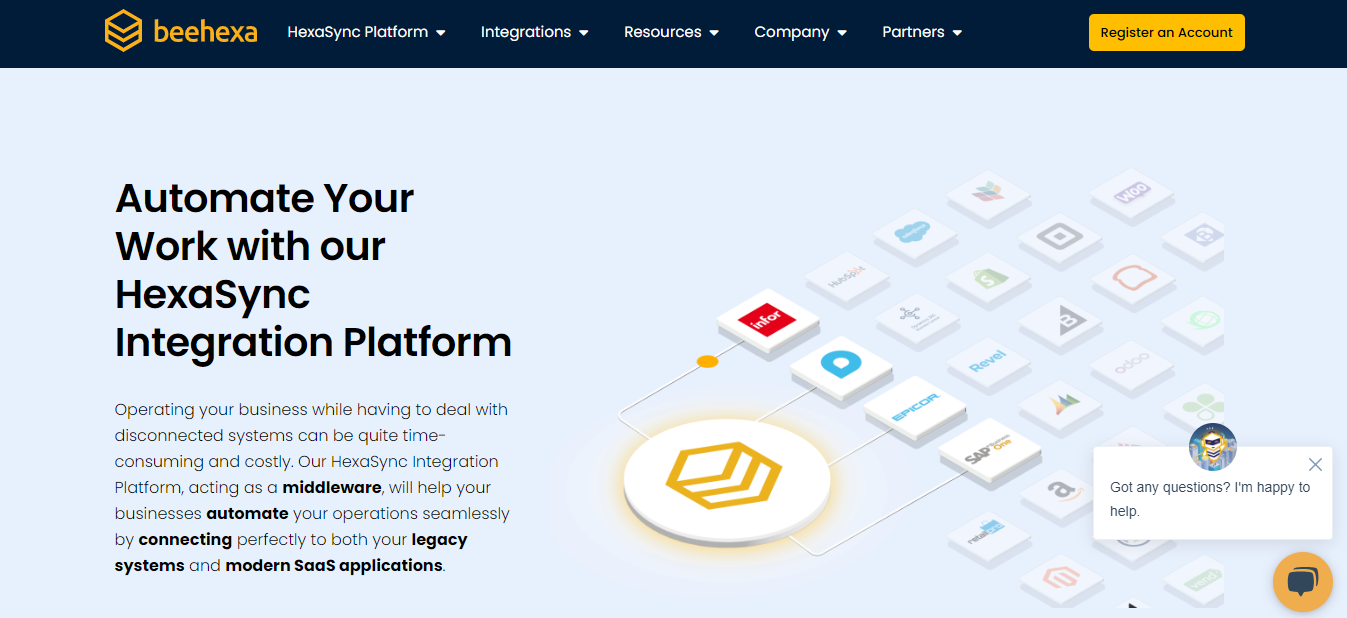According to Capital One Shopping, an estimated 2.33 billion people worldwide shopped online in 2023, marking a 4.38% increase from the previous year. With strong growth following the COVID-19 pandemic, businesses have to handle hundreds, thousands, and even tens of thousands of orders daily. Manual processing of such a high volume of orders can lead to numerous issues, including errors, stock shortages, delays, etc., which diminish the quality of the customer experience. Therefore, business process automation has emerged as an ideal strategy to solve complex problems faced by businesses. This article helps readers gain a deep understanding of business process automation, the benefits it brings, and the challenges it poses.
What is Business Process Automation?

Business process automation refers to the use of technology to perform business tasks to minimize human effort. Business process automation encompasses various approaches, including software integration and the application of advanced technologies such as AI and robotics to different business processes. Minimizing human intervention helps companies increase productivity, enhance accuracy, and improve operational efficiency, allowing them to focus resources on more strategic initiatives.
A survey by CRMsides shows that 88% of small and medium-sized businesses (SMBs) report that automation helps them compete with larger companies by enabling them to close leads quickly, reduce errors, and handle minor tasks as well as provide better customer service. Adopting automation not only helps them shorten transaction times with customers but also saves time on searching for documents, automates social media posts, and manages advertisements.
Meanwhile, Gartner also predicts that 69% of day-to-day managerial work will be fully automated by 2024. Helen Poitevin, Vice President of Research at Gartner, suggests that currently, managers often spend a lot of time filling out forms, updating information, and approving workflows. Instead, they could spend less time on these tasks and invest more time in learning, performance management, and goal setting after using automation technology.
Examples of Business Process Automation

Nowadays, automation is prevalent in every operational process of businesses. Below are some examples of how automation supports functions in business processes.
Inventory Management
The application of process automation in inventory management allows businesses to track inventory levels in real time, helping to prevent overstocking or stockouts. As a result, inventory management software can automatically reorder products when stock levels fall below a predefined threshold, ensuring the availability of necessary items.
One of the special functions of automating inventory management processes is that automated tools can analyze historical sales data and market trends, helping companies predict future demand and plan inventory more effectively. This is particularly important for jewelry brands, where managing high-value items and precious materials requires precise tracking. Jewelry businesses often deal with fluctuating demand and limited stock, making inventory accuracy crucial. For instance, CaratIQ provides specialized solutions for the jewelry industry, enabling brands to monitor gemstone and metal availability in real time, streamline their supply chain, and reduce the risk of overstocking or stockouts.
Logistics and Shipping
Applying automation to logistics and shipping processes includes route planning and shipment tracking, helping businesses ensure timely delivery and reduce costs. Consequently, customer service is also enhanced.
Customer Management
Many businesses today use CRM software for customer care. The time spent on managing and supporting customers has also been significantly reduced after implementing CRM. This software automates the sales force by automatically collecting leads, scoring them, and assigning them, allowing the sales team to focus on closing deals. Additionally, CRM systems like Hubspot can automate marketing campaigns through automated emails, social posts, etc.
Another great example of automation applied in customer support is image recognition. Customers can upload images of desired products, and then the system identifies and recommends similar items available in the store thanks to AI.
Chatbots, one of the automated response functions, are being used by most businesses through social media platforms, websites, e-commerce sites, etc. Chatbots use robotic automation to help businesses respond and provide basic information to customers.
Finance and Accounting
Accounting software has helped businesses save time and ensure accuracy by automatically generating and sending invoices, reconciling purchase orders with invoices, and delivering receipts. Additionally, business process automation tools can aggregate financial data from multiple sources and generate accurate and timely reports. Other tasks supported by automation include payroll processing, expense management, accounts receivable and payable processing, and tax compliance.
Human Resources
HR Software Solutions has built automated processes to support businesses by automatically screening resumes, scheduling interviews, and tracking candidates throughout the recruitment process. Some software is designed to guide new employees by automatically providing training materials and necessary task lists, ensuring a smooth transition into the company. Additionally, some businesses use automated tools for storing and retrieving employee records, or automated payroll systems.
Why do Businesses Need Automated Processes?
Compare Manual Purchase Order Process vs Automated Purchase Order Process


Looking at the two processes above, it is evident that manual order processing faces many difficulties and consumes a lot of time due to excessive human dependency. On the other hand, automating the order processing will remove all barriers as every step is performed without human intervention. Let’s discover the detailed benefits of business process automation below.
Benefits of Business Process Automation
Reduce cost and time
Compared to manual tasks because they are performed individually at a slow pace, business process automation reduces manual tasks, allowing you to accomplish more with fewer resources. As a result, you can save personnel costs and optimize the consumption of resources such as energy, raw materials, etc.
Business automation also helps companies reduce the number of tasks their employees perform. This allows businesses to utilize their workforce for more valuable tasks, significantly reducing time.
Imagine if you had to handle complaints and advice hundreds to thousands of customers every day. Instead, Chatbots solve more than half of the work for you.
Scalability
If one day your company expands and has to process hundreds to thousands of orders every day, but you still do it manually, can you ensure your operating process runs smoothly? Of course, manual processes will hinder your business growth.
Business process automation can be adjusted to accommodate your company’s expansion, meeting rapid changes without requiring significant additional resources.
Improved Accuracy and Quality
Human productivity can be influenced by external factors, and even skilled and experienced employees can make mistakes. Machines, on the other hand, work consistently and do not get tired or lose focus. Therefore, automation significantly reduces errors, leading to high accuracy in tasks.
Automation also enhances quality control processes by consistently applying the same standards and checks, helping to improve service and product quality.
Higher Productivity
Automation can increase the volume of work completed within a given time, boosting product output while saving time. Besides, by taking over some of the employees’ tasks, technology allows them to focus on more strategic activities.
One of the typical examples is the electric car manufacturing company, Tesla. This company’s manufacturing process is highly automated, allowing them to produce cars faster while maintaining high-quality standards, giving them a competitive edge in the car industry.
Increase Customer Experience
Nowadays, customers prioritize quality and customer service when choosing where to shop. Thanks to the application of AI in chatbots, business process automation has helped companies speed up response times, handle and advise on customer issues.
Additionally, the system can analyze customer data to provide personalized experiences and recommendations, enhancing customer engagement and loyalty. Netflix, one of the world’s most popular film producers and publishers, uses automation to recommend personalized content to customers, improving user engagement and retention. by providing a suitable viewing experience.
Competitive Advantage
Business automation software allows users to respond quickly to market changes and customer demands. Companies can innovate rapidly by adopting business process automation tools, enabling them to stay ahead of their competitors.
Challenges of Business Process Automation

Complex Implementation Process
Integrating existing systems with business process automation tools can require substantial effort and time from the business. Furthermore, customizing an automation solution to fit specific business needs also adds complexity to the project.
High Initial Costs
One of the biggest barriers to implementing automation is the initial implementation cost. Businesses will incur an upfront investment when implementing automation, including the costs of software, technology, and infrastructure. Moreover, constant maintenance and upgrades can significantly add to the expenses of the business.
Data Security
The risks of data breaches can increase if security measures are not applied when using business process automation software. Besides, another challenge for automated systems is compliance with data security regulations.
Technology Dependence
Nothing can guarantee 100% smooth operation, and business process automation tools are no exception. They can fail and lead to disruptions in operation. Relying on automated technology can leave your business vulnerable if the system fails.
Lack of Employee Support
Another major challenge for businesses when implementing automation is concern about employee resistance when they may face the risk of job loss or position shifts. Besides, the fear of learning new technology to adapt to new operating procedures may cause employees to disagree.
Business Process Automation with HexaSync Integration Platform

People often think that automation is something very complex, requiring a lot of investment, and only for large enterprises. In reality, automation starts with necessary and familiar tasks, such as automatically connecting your data business systems (as we know data integration). Integration is a part of automation and creates automated business processes, which are essential even for retail businesses.
For example, integration has helped businesses connect systems and pull data from those systems into Power BI. This helps companies collect and analyze data from many different sources, they can automatically create reports and data charts on Power BI.
The HexaSync integration platform is middleware that can connect multiple systems through APIs. With many years of experience in the field of integration, HexaSync has connected with more than 100 different systems (ERP, CRM, Accounting, POS, eCommerce, etc) from SaaS to legacy.
Stay calm about the challenges mentioned above as HexaSync solution will optimize your business operations at a reasonable price. Moreover, technical requirements are no longer a major issue for businesses since HexaSync will handle all integration tasks, allowing customers to simply enjoy the smooth operation post-implementation.
HexaSync customers will receive full support after deployment with no hidden fees. Notably, the HexaSync platform is active on Microsoft AppSource, ensuring absolute stability and security.
Conclusion
In summary, automation can bring enormous growth potential to your business, but it also comes with challenges that can cause implementation failures. However, the advantages of business process automation are overwhelming, while businesses can mitigate these challenges if they choose the right strategy and appropriate provider.